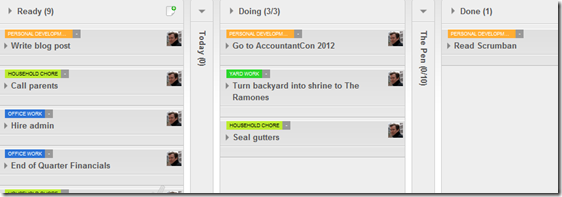Gonk and Geefle Build a Collaborative System
This one might seem a little blatant, but Geefle and Gonk are doing more than simply dividing labor - they are systems thinking in action.Initially, the system is every Snooian for himself. The trees provide fruit and feeding should be a solo endeavor.Unfortunately for Geefle and Gonk though, Darwin apparently skipped Snoo. But they've somehow managed to develop shared but spacey verbal language without ever having actually eaten. (This could easily be one of the least defensible Muppet sketches for the Continuity Director.)So they set up a multi-part system that requires Geefle (the tall French/Welsh character with frozen elbows) to harvest the fruit, and then for Gonk (the short, enabling and emotive Italian character) to feed the fruit to both of them. Luckily for them, nectarines are excellent sources of calcium, potassium, magnesium, and vitamin C - and they have a bit more protein than the average fruit.One can see a clear value stream emerging: fruit grows on the tree and enters the backlog. When Geefle and Gonk are hungry, Geefle picks the fruit, then bounces it off of Gonk's head. Gonk responds with a "gonk," and then feeds the fruit to Geefle and if he's hungry, takes some for himself.A petri net for the Snooian System would look like this:This chart shows that only when fruit exists and Geefle and Gonk are both hungry does the feeding system activate. We can then dispatch Geefle to pick the fruit, when he has the fruit he can throw it to Gonk, who then can feed himself and Geefle.But the system has a bit more complexity that the normal Personal Kanban; it's not quite linear. Three conditions must be met before the work can begin to flow. If there are no nectarines, work cannot commence because there is no fruit to pick. If Gonk is not hungry, then he'll be off playing Snoo-ker and not be anywhere near the tree. If Geefle isn't hungry, he's also unlikely to be available. (Remember, these guys just invented cooperation - they're not even close to being ready for altruism.)And it might turn into a Personal Kanban like this. As Geefle and Gonk celebrate the success of this system, they appreciate that each others performance is contingent on the system. So in the current hunter/gatherer state of Snoo, nectarines come when they want. However, the video implies that there is only one nectarine tree on the entire planet. If we ignore the obvious issues of one specimen from each race and you know...reproduction, this means that Geefle and Gonk are going to need to become skilled at husbanding an orchard, which requires an expansion of their value stream.Which means expansion of their system.Likewise, this means that Geefle cannot be blamed for lack of harvesting if the nectarine tree is bare. Until the value stream expands in some way to control the supply of nectarines, interruptions in service are in no way Geefle-centric.This is fifth in a series of Lean Muppet posts. For a list of Lean Muppet posts and an explanation of why we did this, look here -> Lean Muppets Introduction.









